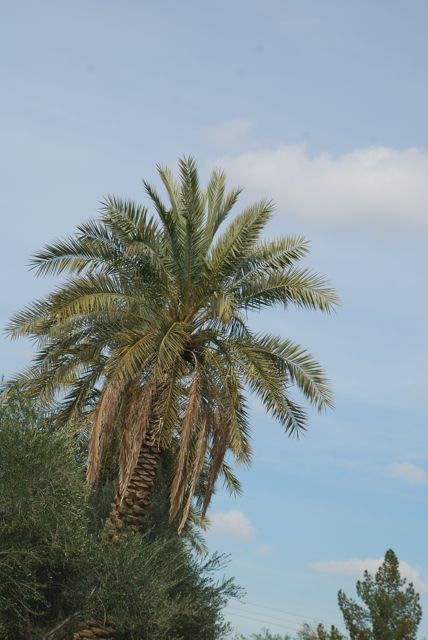We didn’t get any guesses last week for the mystery seed. I was hoping that someone would bite into a sweet, dried fruit, pull out the seed and say, “Aha! The mystery seed was a date seed!”

There are a lot of palm trees growing in the Phoenix metropolitan area of Arizona. One of my favorites is the date palm.

They have a lovely shape.

Although Phoenix dactylifera is the scientific name, date palms are probably originally from northern Africa.
There are a number of different cultivars of date palms. The fruit vary somewhat in shape, size, and of course, flavor.
The book, A Seed is Sleepy, by Dianna Hutts Aston and Sylvia Long, tells about a scientist finding a seed of an extinct date palm that was thousands of years old. When the scientist planted the seed, it grew!
See if you can find a date seed and plant it (just make sure it hasn’t been cooked). Let me know if you grow one.









